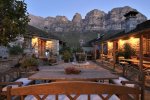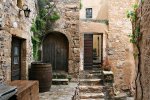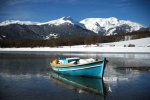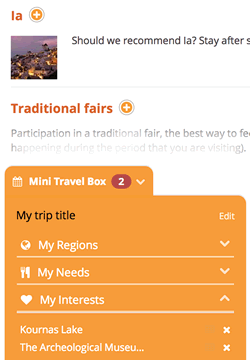On the way down the Aegean Sea and towards the Dodecanese, among a confusion of memories, rocks, sea and white houses you will encounter a natural environment anything but ordinary. With its small hills looking up to the sky and a town built in such a way so as to be seen from miles away, this island is quite unusual.
Patmos is a unique, moving, and beloved place. It is the island where John the Theologian was exiled and saw the Revelation. For a brief moment you are not entirely sure if this place represents history or if history has created this place.
You can read about Patmos even in the works of Thucydides, who states that during the Peloponnesian War, the general Pachas chased the Spartans as far as Patmos. However, there are traces of some prehistoric settlements that prove that the first residents (3000 B.C) of the island were the tribes of Kares (people that lived in Militos) and Iones. This fact also shows us that Patmos has since ancient times been a place where the Gods were worshiped. In different locations on the island you will see ruins of temples dedicated to Artemis, Goddess of the hunt, and Apollo, God of music.
During the Roman era and in the early Christian period, the island seems to have been a place of exile. When John the Theologian arrived on Patmos (around 95 A.C) and wrote the Revelation, the island was ruled by local lords. During the Byzantine era the island was given by the Emperor Alexios I to Saint Christodoulos, who later built the monastery.
Later on, Patmos played an important role in the Greek Enlightenment, and seems to have developed immensely in matters of trade and cultural events. Thanks to the monastery and the intellectual pursuits of the monks, the relatively independent character of the island allowed freedom of ideas, in contrast to other islands of the Aegean Sea.
Patmos is one of the first islands that took part in the Greek Revolution of 1821. Many leaders, such as Emmanouil Xanthos and Emmanouil Pteris lived there. Nevertheless, the island was given to the Turks by way of a special treaty in 1832.
During the early 20th century (from 1912) the island was under Italian Occupation. Some of the buildings, such as the offices of the port authorities and police, were built to accommodate the administrative needs of the Italians. The asphalt road connecting Skala with Chora was also built by the Italians in 1945.
Patmos, together with the rest of Dodecanese, was liberated in 1948 and became part of Greece. In 1981, by legal decree, Patmos was renamed to Sacred Island. Since then it has developed immensely in matters of tourism.
On approaching Chora by boat from the harbor of Piraeus your heart will instantly skip a beat! “Ladies and gentlemen, we have arrived at the harbor of Patmos. Please disembark”. The door opens and now you can see the tall rock in the background. Patmos will charm you at first sight.
Use the map or the alphabet below to find your favorite destination!
Achaea Prefecture
Aegina
Aetoloakarnania Prefecture
Agathonisi
Agistri
Alonissos
Amorgos
Anafi
Andros
Antiparos
Arcadia Prefecture
Argolida Prefecture
Arta Prefecture
Astypalea
Attiki Prefecture
Kalymnos
Karditsa Prefecture
Karpathos
Kasos
Kastelorizo
Kastoria Prefecture
Kavala Prefecture
Kea (Tzia)
Kefalonia
Kerkyra (Corfu)
Kilkis Prefecture
Kimolos
Korinthia Prefecture
Kos
Koufonisi (Ano & Kato)
Kozani Prefecture
Kythira - Antikythira
Kythnos
Samos
Samothrace
Santorini
Schinoussa
Serifos
Serres Prefecture
Sifnos
Sikinos
Skiathos
Skopelos
Skyros
Spetses
Symi
Syros
Would you like to combine skiing in the morning and then go swimming in the afternoon, all in one region? Click to choose your interests and see in which part of Greece you enjoy them. Combinations are endless!










